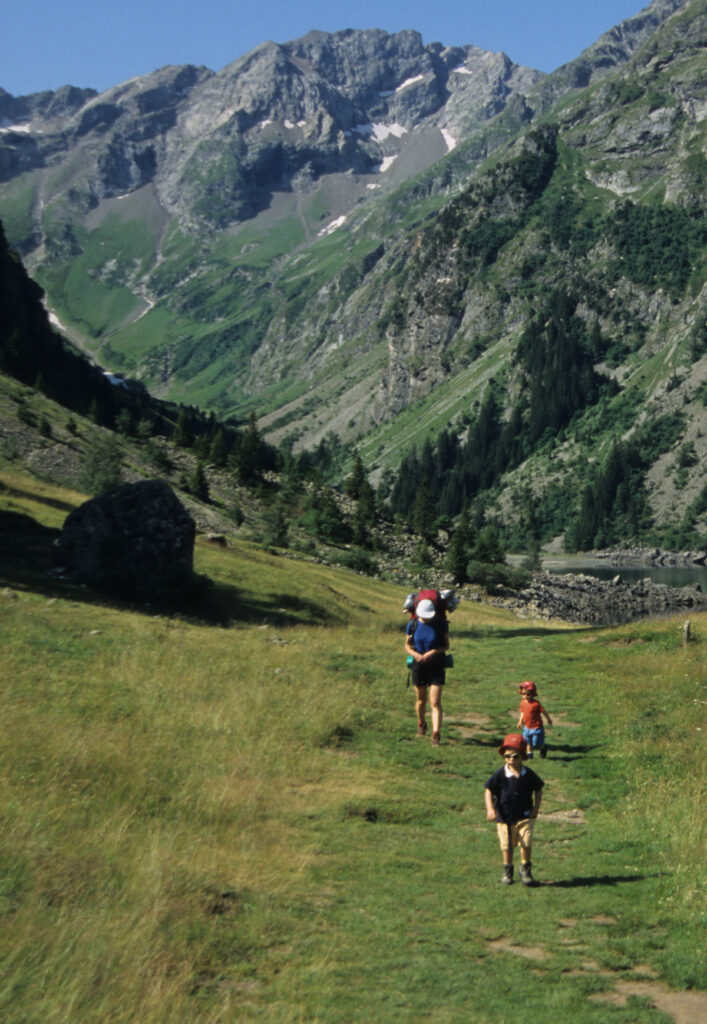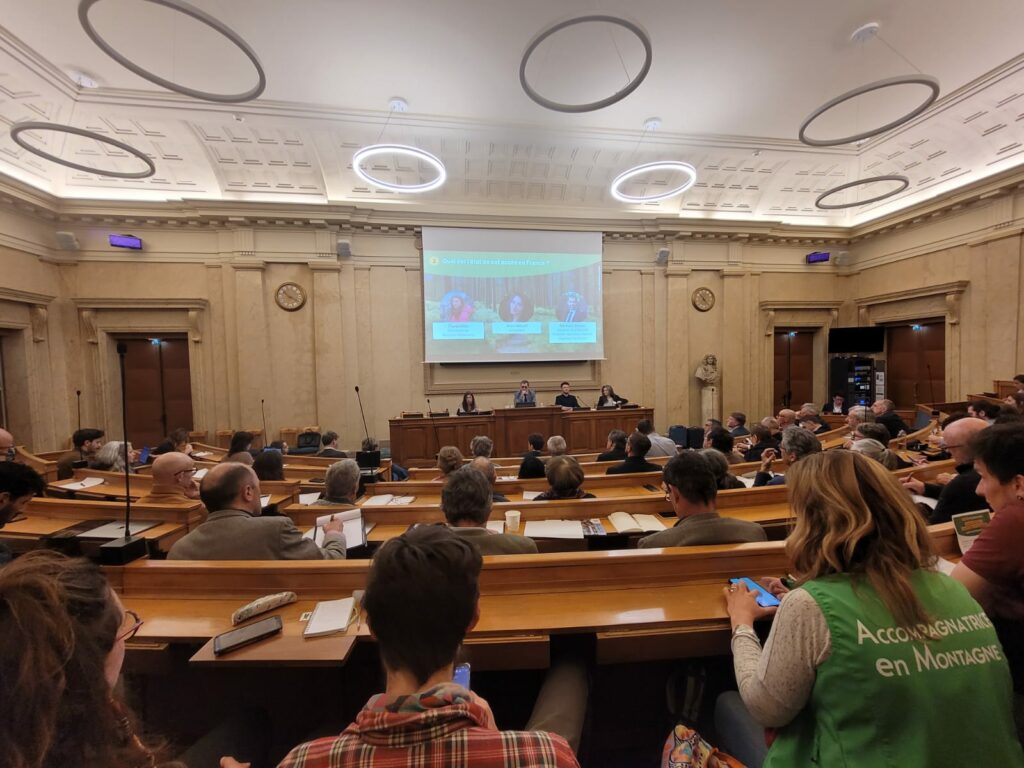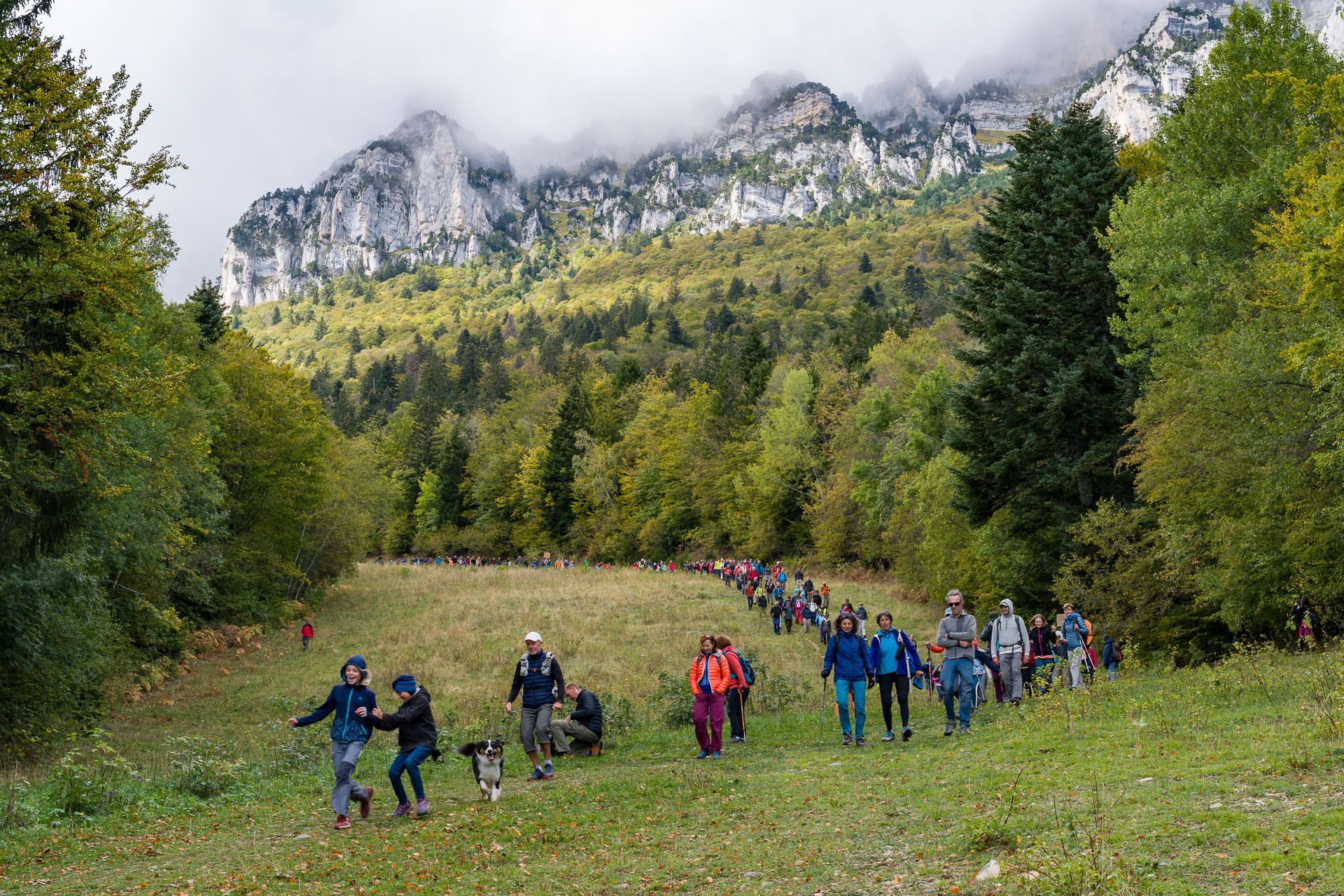77- 01/07/2024 In France, hikers perceive the recent law on engrillagement as a setback to their freedom of movement, as an attack on a customary right of access to wide open spaces. How is the community of nature users organizing to change a law they consider unjust? The approach adopted relates to the process of empowerment. Analysis by Mathieu Crétet, project manager for protected areas at the national mountain protection association Mountain Wilderness France.
Collateral effects of the law
The Law of February 2, 2023, along with its decrees and implementing orders of April 8, 2024, aims to limit the enclosure (engrillagement) of natural spaces owned by private landowners (1). The aim is to combat tall fences in the countryside that mar the landscape, as seen in Sologne, and prevent wildlife from freely moving between its various habitats. The obligation to dismantle hunting enclosures comes with a trade-off to satisfy landowners: the reinforcement of the prohibition against trespassing on their land, punishable by a fourth-class fine (€135 in 2024). Did the legislator anticipate that this law would primarily benefit owners of unfenced territories, who now have a strontger legal tool against the intrusion of uninvited persons?
By wilderness, we mean a high-altitude environment where anyone who wishes can still experience direct encounters with vast open spaces and freely enjoy solitude, silence, natural rhythms, dimensions, natural laws, and dangers.
Excerpt from the Biella Theses (1987) and the philosophical foundation of the international Mountain Wilderness movement.hilosophique mouvement Mountain Wilderness international
The Triggering Event
In September 2023, in the Hauts de Chartreuse National Nature Reserve (38- France), the owner of a 750-hectare estate prohibited access to hikers by placing “Private Property – No Entry” signs on marked trails. This decision was perceived as an injustice by regular walkers in this Dauphiné massif. “Moreover, the owner justified this exclusion by invoking the protection of biodiversity, which is not the responsibility of landowners but of the reserve’s wardens,” notes Mathieu Crétet. “Furthermore, this area has been turned into a private hunting ground where days are negotiated at a high price. This is no longer rural hunting but a high-end leisure activity that could also harm biodiversity – hence the misunderstanding of a regulation that applies differently depending on the status of the individuals.” The affair crystallized all the tensions, and citizen collectives were formed, denouncing a restriction on their freedom of access to the reserve’s trails, based on an expansive interpretation of property rights and their use.
Comment s’est organisée la résistance ?
Mathieu Crétet : In the summer of 2023, the first signs appear in the reserve. The collective was formed at the end of August and launched a petition on September 1. Subsequently, it joined forces with Mountain Wilderness to federate the structures concerned (sports federations, unions, associations, etc.). On Sunday, October 15, 2023, a peaceful hike-demonstration was organized at the Col de Marcieu. It brought together 1,000 people, all demanding free access to the Chartreuse. Subsequently, members of the collective approached local elected officials (mayors, PNR representatives) to try and break the deadlock. They also called on members of parliament.

On December 30, 2023, an article was published in Le Monde, co-written with our partners the Syndicat National des Guides de Haute-Montagne (SNGM), the Collectif Chartreuse, supported by ecologist MPs Lisa Belluco and Jérémie Iordanoff (EELV), and signed by 50 leading figures.
We have also created a website https://droit-a-la-nature.org/ , we have an Instagram account “droitalanature” and a whatsapp group, and we regularly organize visios to coordinate our actions.
During the period of strong mobilization, the community acquired new knowledge. Sub-groups researched property rights, their history and protection in different latitudes. Studies were also carried out on the hierarchy of constitutional rights – including but not limited to property – and on the right of access to nature, which does not exist in France, but has indeed been enacted in some European countries (see below)
From this foundation, an argument was constructed that fueled advocacy for the promulgation of a law ensuring access to nature. It emphasized tolerance of access to natural spaces, the educational virtues of engaging with nature to understand the importance of its protection, promoting a healthy reconnection with nature, and public health benefits.
Where Are We in July 2024?
MC : The proposed law was rejected by the Law Commission in March 2024. Despite our strong mobilization, we are well aware that we remain a minority.
With the Chartreuse collective, we have partnered with similar organizations (Right to Nature Côte d’Azur, Our Village Rimbach) to undertake a nationwide action. We continue to distribute flyers and regularly engage local elected officials.
We remain hopeful because mindsets are evolving rapidly under the pressure of an increasingly urgent climate crisis.
Is Your Approach Aimed at Challenging Property Rights?
MC : No. The right to private property is not being challenged, but it is not considered absolute either. It is just one right among many, especially since other rights, such as the freedom to come and go and the right to a healthy and balanced environment, also have constitutional value. Moreover, private property should not be confused with a private residence: in France, it is always possible to enclose one’s private residence within a radius of 150 meters, or 7 hectares, and this land can be fenced according to the rules of the applicable Local Urban Plan (PLU). This is undisputed. We are advocating to stop the confusion between private residences and the possession of large natural spaces. These estates can’t be likened to private gardens. Here we are talking about dozens or even hundreds of hectares that are part of a landscape that can be considered a common good.

How Can We Move Beyond the Eternal Private Land vs. Collective Use Confrontation?
MC : We acknowledge the need for temporary and limited access restrictions based on specific uses, such as hunting or respecting wildlife tranquility. We also believe it is necessary to evolve property rights to integrate a right of access to nature and a right to animal tranquility. Why not taking inspiration from neighboring countries? This right is in effect in Scandinavian countries, Germany, and Scotland. In Germany, Article 59 of the Federal Nature Conservation Act stipulates that “access to open landscape on roads and paths and on unused surfaces for leisure purposes” is allowed for everyone. In Scotland, the Scottish Outdoor Access Code grants everyone “the right of access to most of the land and inland waters for recreational, educational, and travel purposes, provided they act responsibly.“
In France, we hope it will be possible to find a compromise, perhaps by agreeing on seasonal patern. Specifically, we envision sharing activities over time and space to reconcile different practices (legal resource exploitation of game and wood, outdoor sports and other leisure activities, respect for wildlife tranquility).
In this regard, we will continue to engage with new Parliament members by creating a cross-party working group on these issues. We are now recognized as stakeholders to be reckoned with in co-constructing the uses of our landscape heritage.
Interview by Marie-Georges Fayn
[1] This applies to fences installed in natural or forested areas as defined by the local urban development plan (PLU). In concrete terms, this law obliges owners who have fenced their land for less than 30 years (1993) to make their fences game-permeable, by leaving a 30 cm gap between the ground and the bottom of the fence, and limiting the height of the mesh to a maximum of 1m20. In practical terms, this law spells the end of hunting enclosures. The losers are the owners and managers of territories with enclosures who have until January 1, 2027 to comply.
Collective strategIes of Mountain Wilderness France (1988)*
| Respecting life, preserving nature, and particularly safeguarding mountain territories. | Three Priority Areas Defending mountain natural spaces Encouraging respectful practices Amplifying the transition of territories |
| Community Empowerment | Internal Strategies to Strengthen Community Bonds 10 employees driving the values of Mountain Wilderness France, support and foster the commitment of 419 volunteers and the involvement of 1,614 members. Volunteer Engagement: Introduction interviews about the association, welcome and exchange webinars. Formal and Informal Meetings: Regular gatherings to discuss projects and foster relationships. Regular Information Sharing: Continuous updates on projects, active social media management. |
| Collaborative Empowerment | Internal Strategies for Coordinating Activities These strategies include knowledge and skills transfer, access to and mastery of resources, and the design of solutions, alternatives, or corrective measures. Volunteer Mission Monitoring: Ensuring effective oversight of volunteer assignments. Support for Local and Thematic Groups: Providing logistical, informational, legal, media, and technical support. Sharing of Inter-Knowledge and Experiences: Centralizing and analyzing field feedback. Development of Legal and Planning Expertise: Creating resources and expertise in legal matters and territorial planning. Knowledge and Skills Transfer Programs: Designing programs for transferring knowledge and skills. Solution Design: Initiatives such as dismantling obsolete installations and creating car-free routes. Event Creation: Organizing events to promote environmental awareness and engagement. |
| Societal Empowerment | External Strategies for Raising Awareness Among Decision-Makers and the Public on Association Issues These strategies involve educating decision-makers and the public about the association’s concerns: Educational Workshops: Organizing workshops to educate various audiences about respectful mountain practices, such as the Mountain Mural. Advocacy Development: Developing advocacy campaigns through lobbying, press relations, petitions, protests, gatherings, and legal actions. Participation in Events: Engaging in external events such as conferences, biennials, film screenings followed by discussions, festivals, fairs, meetings, art exhibition openings, trade shows, and symposiums. Influencer Awareness: Establishing the “Grand Cordée,” comprising artists, athletes, journalists, philanthropists, all serving as ambassadors for the association’s mission and messages. Partnerships: Forming partnerships with groups that share similar values. Management and Recruitment of Patrons: Handling relationships with and recruiting patrons who support the association’s objectives financially and through advocacy. |

Main cause: defending and promoting the uniqueness, beauty and richness of mountain areas; working for the cohabitation between a wild mountain and a mountain to live in.
Founded in France: 1988
Address: 5 place Bir Hakeim, 38000 Grenoble
Contact: contact@mountainwilderness.fr – 04 76 01 89 08
Special features: Mountain Wilderness International was born in Biella, Italy (1987). This non-governmental organization is recognized by the European Union and the Council of Europe.
Missions: Contributes through its actions to changing attitudes towards the mountains, and proposes framework laws and recommendations relating to mountain policy and development, with respect for people and nature.
Number of members : The movement has 419 volunteers and 1,614 members (data 2023).





En postant un commentaire sur www.selfpower-community, vous acceptez les règles de l’espace réaction et reconnaissez à www.selfpower-community la capacité de ne pas publier certaines contributions sans avoir à motiver cette décision.
prendre connaissance des règles